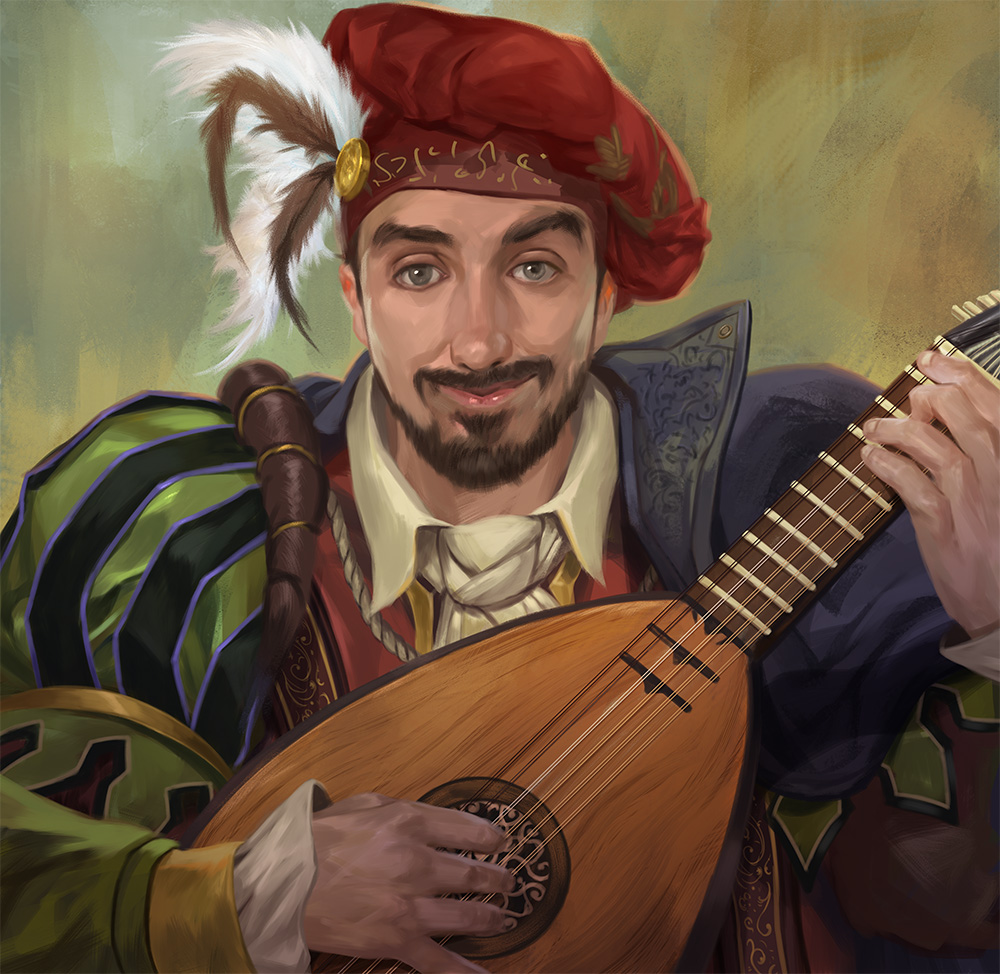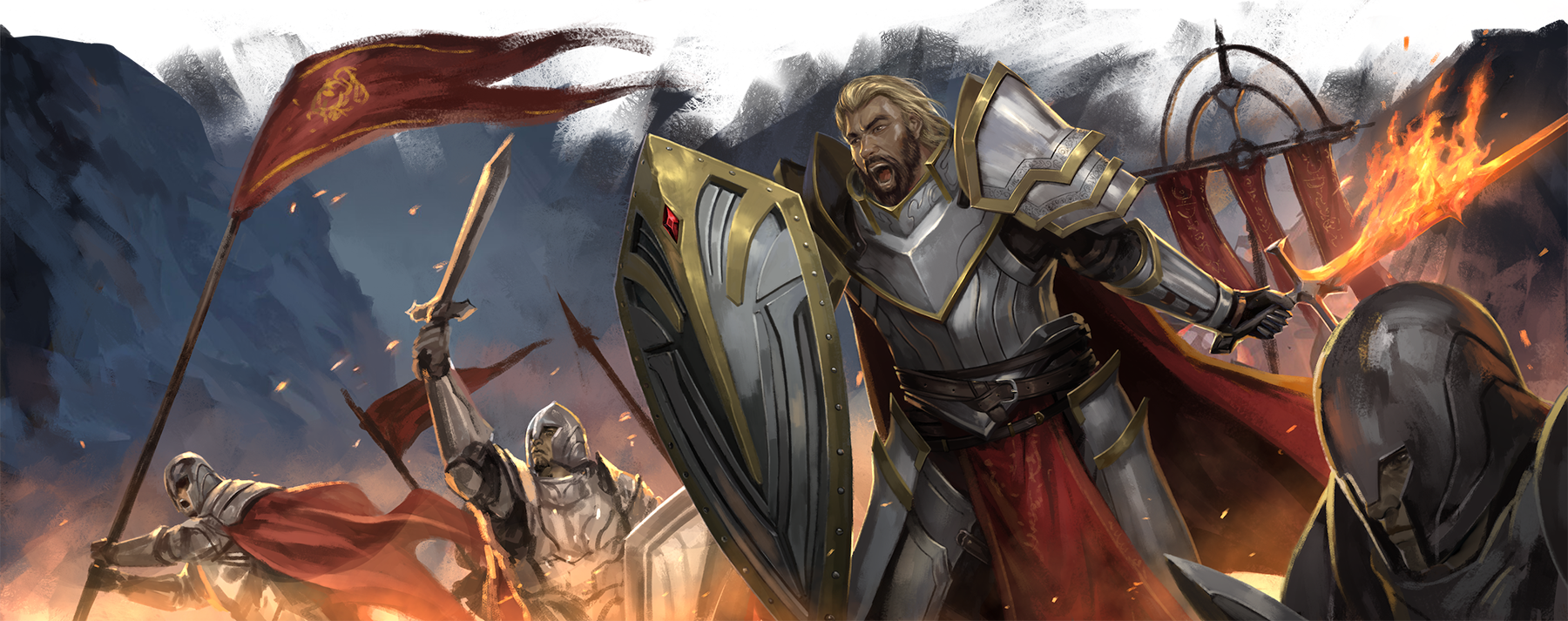10 of Art History's Most Impeccable Beards and Mustaches

 Joe Nightingale, MBBS, MSc
Joe Nightingale, MBBS, MSc

Growing a beard is like growing a work of art. Hours are spent tending, trimming, and refining; your electric trimmer and scissors are like an artist's palette and brush. Indeed, in the most expressive examples, beards are sculpted and shaped into the magnificent artworks and geometric patterns.
Small wonder that paintings of beards were common throughout history. As the cycles of beard fads and fashions wax and wane, we see famous painters in certain eras go fanatical for painting beards, with every knight, dandy, or passerby sporting a majestic bit of facial fuzz. Even some artists are more renowned for their facial hair than the artworks themselves.
Below we're going through the greatest paintings of beards (and one sculpture) in all art history. From the early renaissance to the modern era, these are some wackiest, wooliest, and wildest beards ever painted.
Self-Portrait with Grey Felt Hat, Vincent Van Gogh (1887)

Van Gogh's portraits are some of the most evocative in art history. Drawing on the Pointillist approach of his contemporaries, the artist's pensive face and orange beard become a sea of smudges and flowing colors. Yet, it is the beard, in oranges, reds, and yellows, that stands out so clearly against the sea of blues behind.
Simple yet effective, it's not hard to see why this is one of the most famous beards in paint.
Portrait of a Man in Red Chalk, Leonardo da Vinci (1510)

More of a quick sketch by the aged master than a work of renown, the Portrait of a Man in Red Chalk has been endlessly debated over the years. It's reported that it depicts Leonardo da Vinci himself, now aged and bearded. Yet others contest who the sitter really is.
Notably, the beard is long and flowing in the portrait – a style uncommon in Renaissance portraits. Beards could indicate a person of sagacity, or it could merely suggest that da Vinci was one stylish older gentleman. We lean towards the latter!
Moses, Michelangelo (1515)

Beards have long been associated with kings and renowned religious figures. In this remarkable statue, Moses, the legendary Biblical character, sits proudly; his long, glossy beard is colubrine and rope-like, being tussled by the Jewish patriarch, who ponders some unknown question.
What's also interesting is the pair of small horns upon the figure's head. Why is Moses being given an almost demonic aspect? Why the river of hair? And what is Moses thinking?
Portrait of Joseph Roulin, Vincent Van Gogh (1889)

Bursting with life and brimming with color, the Portrait of Joseph Roulin was Van Gogh's attempt at a "modern portrait." Here, he did attempt to imitate the sitter's appearance but captured their life and character through vivid color.
Nowhere is this more evident than in the stupendous beard – two coils of flowing locks. Roulin, the sitter, was a friend of the artist and sat for many portraits. However, it is suspected that Van Gogh may have painted this from memory after Roulin left for a better-paying job. It just shows how a splendid beard can lodge in a friend's memory.
Self-Portrait with a Sunflower, Anthony van Dyck (1633)

Most artists paint beards; van Dyck invented one. His characteristic beard, composed of a curled mustache and goatee, became the beard of his age. Everyone from Charles I of England to the Holy Roman Emperor Ferdinand II sported this now-legendary beard.
In Self-Portrait with a Sunflower, we see the first, the original, the classic "Van Dyke." He is an artist at the height of his powers and influence: a gold chain around his neck and a sunflower ahead.
Though less popular, the Van Dyke beard is still a common style even to this day.
Autumn, Giuseppe Arcimboldo (1573)

Giuseppe Arcimboldo was something of a maverick in paint. Where his contemporaries functioned as simple court painters, Arcimboldo had other ideas. He would capture a person's essence – spill their soul – through fruits, vegetables, fungi, and other natural delights.
In Autumn, a man is depicted, made from planks, grapes, and other common fruits. His beard, however, is formed from a sheaf of wheat – certainly one of the most imaginative paintings of a beard.
Night Watch, Rembrandt van Rijn (1642)

To call the Night Watch colossal is an understatement. Standing in the Rijksmuseum in Amsterdam, the eponymous figures are life-size. The dramatic scene as they patrol the town is overwhelming; as if the troop were about to step out of the painting and into the gallery.
What's most striking is the near-universal presence of the "Van Dyke" beard. These debonaire Dutch townsmen are marked out as respectable by their clean cheeks and pointed goatees. It's a real window into a beard culture long since passed.
School of Athens, Raphael (1511)

The School of Athens is a fresco painted onto the walls of the Stanze di Raffaello in the Vatican. The large painting depicts the early days of Greek philosophy. Great thinkers and heroes like Pythagoras, Archimedes, and Alexander the Great relax and debate on the steps of the school. However, central to the scene are Plato and Aristotle – the two greatest thinkers of their age.
We see beards of all kinds throughout the scene, from the unkempt to the preened. One interesting note is that conquerors like Alexander are clean-cheeked, while both Aristotle and Plato wear full beards, suggesting a link to wisdom and intelligence. After all, doesn't stroking your beard help you do your best thinking?
The Englishman at the Moulin Rouge, Toulouse-Lautrec (1892)

Painted during the "Belle Epoque," as Parisian culture was at its height, we see a starchy-looking Englishman with his characteristic mustache talking to an assortment of women who are painted more abstract. It's an interesting contrast between the attitudes and behaviors behind the Englishman's uniform: the black suit, top hat, and mustache.
Soft Self-Portrait with Grilled Bacon, Salvador Dali (1941)

Just a glance at the eyebrows and the thin, spindly mustache tells you this is Dali – although the melting mask-like face is also a bit of a giveaway. In his characteristic bizarre style, Dali paints himself not as a man but as a mask. His melting smile, mustache, and face are propped up by a series of odd struts.
Oh, and there's a slice of grilled bacon on the side. What do you make of this mad scene? Perhaps the most bizarre mustache painting ever.

No comments yet…